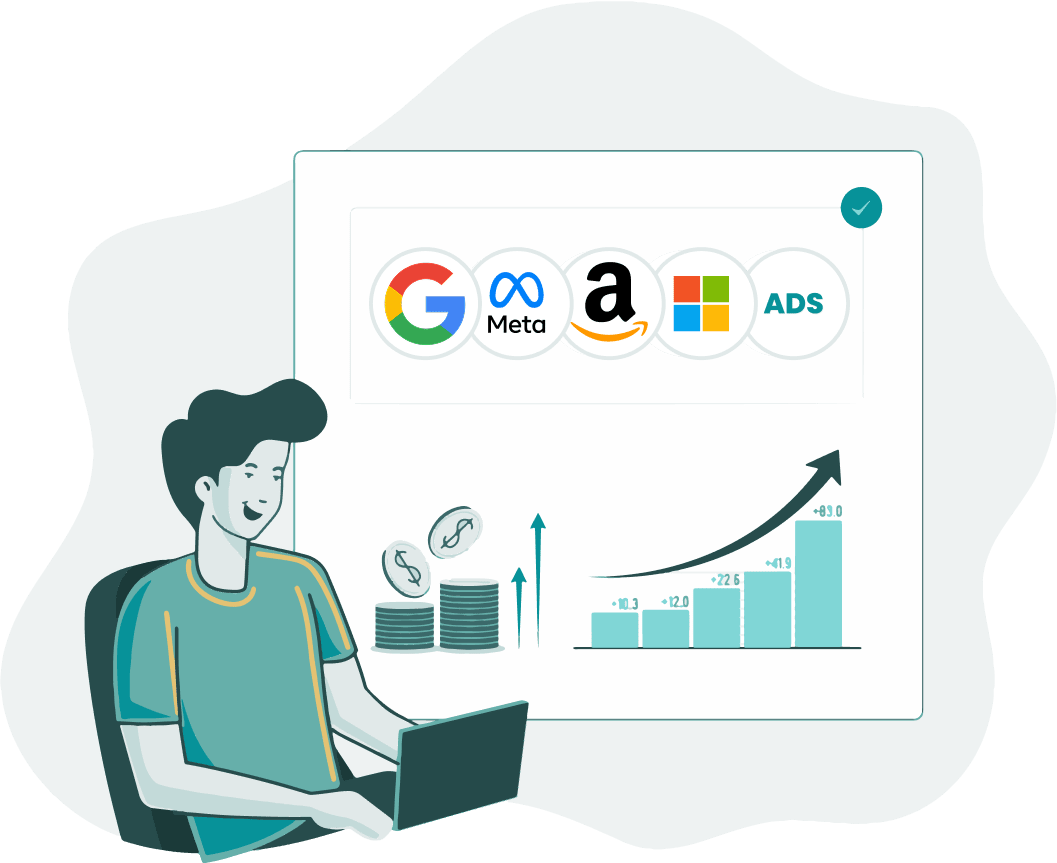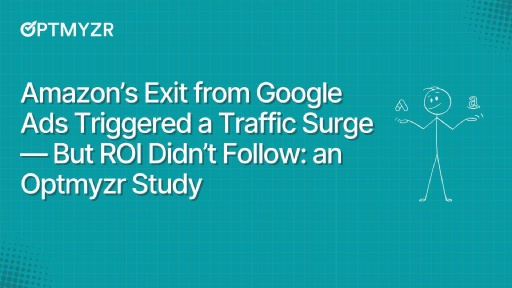Every year, like clockwork, Google and Microsoft encourage advertisers to use seasonality bid adjustments during Black Friday and Cyber Monday (BFCM).
The logic sounds irrefutable: You expect conversion rates to spike, so you give Smart Bidding a “heads up.” This theoretically allows the algorithm to raise bids faster and capture more volume during the peak.
But strictly following platform recommendations isn’t always the best strategy. We have to ask: Should you really override Google’s models during the most sophisticated, predictable retail moment of the entire year?
To answer that, my team at Optmyzr analyzed data from three consecutive BFCM seasons (2022–2024). We looked at up to 6,000 advertisers per year, splitting them into two cohorts: those who used seasonality adjustments and those who didn’t.
After analyzing tens of billions of impressions, we found one very clear conclusion: For major retail holidays, seasonality adjustments often do more harm than good.
The core insight: Google already knows it’s Black Friday
BFCM is one of the most predictable spikes in global commerce. It’s not a surprise.
Google’s bidding models are trained on vast amounts of historical data. They know exactly when Black Friday is, and they know consumer behavior shifts globally during this week.
When we stepped back and looked at the performance data across 2022, 2023, and 2024, the “smartness” of Smart Bidding became obvious.
For advertisers without seasonality adjustments, Smart Bidding:
- Consistently detected the CVR spike.
- Increased bids appropriately to capture volume.
- Kept ROAS stable (or even improved it in 2024).
The algorithm behaved consistently and rationally without human intervention.
The “Precision-Risk” Problem
So, why do seasonality adjustments often backfire? It comes down to a precision-risk problem.
When you apply a seasonality adjustment, you are effectively telling Google: “I expect conversion rate to increase by X%. Raise bids immediately by X%.”
Smart Bidding takes this literally. It does not hedge your bet. It assumes you have perfect foresight.
- If you tell Google to expect a +50% conversion rate lift, your bids rise by roughly 50%.
- But if the real lift is only +40%, then you’re effectively overbidding by 7.1% relative to the true value of the traffic (1.5/1.4).
During BFCM, volume is so high that this misalignment becomes expensive instantly. Because most marketers cannot predict the exact CVR lift down to the decimal point, adjustments introduce volatility.
What the data shows: 3 years of consistent volatility
We analyzed three years of data to see if this theory held up. The patterns were strikingly consistent.
1. Conversion rates rise for everyone (Signal vs. Noise)
Across the “no adjustment” cohort, Smart Bidding successfully identified the opportunity without being told.
- 2022: +17.5% CVR Lift
- 2023: +11.9% CVR Lift
- 2024: +7.5% CVR Lift
Smart Bidding already understands the BFCM signal. You don’t need to amplify it.
2. Adjustments cause excessive CPC inflation
A seasonality adjustment is designed to increase CPCs. That is its purpose. However, our data shows that adjustments consistently cause CPCs to rise too much relative to the conversion gain.
Year | CPC Inflation (No Seasonal Bid Adjustment) | CPC Inflation (With Seasonal Bid Adjustment) |
2022 | +17% | +36.7% |
2023 | +16% | +32% |
2024 | +17% | +34% |
Across all three years, seasonality adjustments effectively doubled CPC inflation compared to standard bidding behavior. That would have been fine if conversion rates rose at the same rate, but read on to see what we found.
3. ROAS takes a hit
When CPCs rise faster than conversion rates, efficiency drops. This is exactly what happened to the advertisers who tried to outsmart the algorithm.
Year | ROAS Change (No Seasonal Bid Adjustment) | ROAS Change (With Seasonal Bid Adjustment) |
2022 | –2% | –17% |
2023 | –1.5% | –10% |
2024 | +5.7% | –15.7% |
The pattern repeats like clockwork: Advertisers who let Smart Bidding do its job maintained stable ROAS. Advertisers who applied adjustments saw dramatic efficiency drops.
The Exception: Volume at all costs
Now, is there ever a reason to ignore this data and use the adjustments anyway? Yes.
While the efficiency story is grim, the volume story is undeniable. If your directive for BFCM is simply “maximize revenue at all costs,” seasonality adjustments act as a brute-force multiplier.
By artificially inflating the expected conversion rate, you force the system to bid aggressively on every potential impression. We compared the Conversion Value (Revenue) lift for both cohorts, and the results are stark:
Year | Revenue Growth (No Seasonal Bid Adjustment) | Revenue Growth (With Seasonal Bid Adjustment) | The Trade-Off |
2022 | +25.0% | +50.5% | Double the growth, but ROAS dropped 17%. |
2023 | +30.3% | +52.8% | Significant volume gain, but ROAS dropped nearly 10%. |
2024 | +33.8% | +39.9% | Slight volume gain, but ROAS tanked by nearly 16%. |
The data supports the “aggressive” strategy:
- In 2022 and 2023, using adjustments nearly doubled the revenue growth rate compared to relying on Smart Bidding alone.
- In 2024, the gap narrowed, but adjustments still drove more top-line revenue.
If you are clearing inventory or fighting a turf war where margin is secondary to market share, seasonality adjustments are a valid tool. They ensure Smart Bidding doesn’t get “shy.” Just go in with your eyes open: you are buying that extra volume at the cost of efficiency.
When should you actually use Seasonality Adjustments?
I don’t want to suggest the feature is useless. It is a powerful tool, but only when applied in the right scenario.
Seasonality adjustments are designed to bridge the gap between what you know and what Google doesn’t know.
Good Use Cases (Events Google can’t see coming):
- A one-off “Friends & Family” flash sale.
- A surprise clearance event you’ve never run before.
- An email-only promotion driving a sudden surge in high-intent traffic.
- A niche industry event that doesn’t correlate with global trends.
Bad Use Cases (Events Google knows perfectly well):
- Black Friday and Cyber Monday.
- Christmas / Boxing Day.
- Valentine’s Day (for florists/gifts).
In short: If the spike is global and historical, Google has the data. If the spike is unique to your brand, you need to share that with Google as a seasonal bid adjustment.
Conclusion: Trust the algorithm (with guardrails)
It is somewhat ironic that Google recommends seasonality adjustments for BFCM, given that their own data suggests Smart Bidding handles predictable events beautifully.
Our data is unambiguous. Seasonality adjustments during known holidays consistently lead to overshooting, volatility, and lower ROAS.
My recommendation for this BFCM:
- For mainstream retail events: Do not use seasonality adjustments. Let Smart Bidding handle the macro trends.
- For unique, brand-specific spikes: Use seasonality adjustments, as Google has no historical signal to rely on.
Of course, “trusting the algorithm” doesn’t mean “set it and forget it.” BFCM is chaotic. Rather than trying to predict CVR lift, focus your energy on instrumentation.
Use tools like Optmyzr to set up guardrails like anomaly alerts for sudden CPC shifts, budget pacing monitors, and rule engine automations to cap runaway bids. You shouldn’t be flying blind, but you shouldn’t be fighting the autopilot either.
Not an Optmyzr customer yet? Now’s the best time to sign up for a full functionality 14-day free trial.
Thousands of advertisers—from small agencies to big brands—worldwide use Optmyzr to manage over $5 billion in ad spend every year.
You will also get the resources you need to get started and more. Our team will also be on hand to answer questions and provide any support we can.
About the data: Study results are based on an aggregated study of a subset of Optmyzr accounts from 2022–2024. The analysis spanned 5,886 accounts in 2024, 5,114 accounts in 2023, and 4,292 accounts in 2022.
Metrics were compared between the BFCM period, which spans from the Wednesday before Black Friday to the Wednesday following Cyber Monday, and data from two Tuesdays before Black Friday through one Tuesday before Black Friday.
The analysis was split between advertisers who set a bid adjustment during the BFCM period and those who didn’t.









